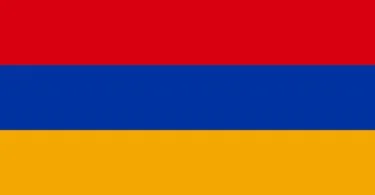Chapter 5. Settlement of business
Part 1. Notification and tabling of committee reports
Article 1
A committee report shall be notified to the Chamber and tabled twice at meetings of the Chamber before settlement, unless the Riksdag determines, in response to a proposal from the committee or from the Speaker, that the matter shall be settled after having been tabled only once. Rules concerning further tabling of committee reports are laid down in Article 7, paragraph two.
A motion under Chapter 2, Article 22, paragraph one of the Instrument of Government calling for a draft law to be held in abeyance for a minimum of twelve months may be put forward when the committee report on the draft law has been notified to the Chamber.
Supplementary provision 5.1.1
A committee report shall not be notified to the Chamber before copies have been distributed to members of the Riksdag.
The Speaker shall confer with the chair and deputy chairs of the committee before introducing a proposal that a matter shall be settled after having been tabled only once. When the Speaker introduces such a proposal, it shall be notified to the Chamber at the same time as notice is given that the committee report is being tabled.
Supplementary provision 5.1.2
A motion calling for a draft law to be held in abeyance for a minimum of twelve months is put forward in writing and entered, if possible, in the order paper of the Chamber.
Part 2. Tabling and settlement times for certain other matters
Article 2
A motion calling for a referendum on a matter of fundamental law or for a declaration of no confidence shall be tabled in the Chamber until the second meeting following the meeting at which the motion was put forward. The matter shall be settled no later than the next meeting thereafter.
A proposal from the Speaker for a new Prime Minister shall be tabled in the Chamber until the second meeting following the meeting at which the proposal was put forward. The matter shall be settled no later than the fourth day following the day on which the proposal was put forward, in accordance with the provisions laid down in Chapter 6, Article 4, paragraph two of the Instrument of Government.
Part 3. Motions put forward during the deliberation of a committee report
Article 3
A member may move adoption or rejection of the proposals for decision contained in a committee report during the deliberation of the report. Rules concerning motions and decisions to refer a matter back to the committee delivering the report, or to refer it to another committee, are laid down in Chapter 4, Article 10.
Part 4. Settlement of business
Article 4
A matter under deliberation may not be taken up for settlement until the Chamber has declared the debate closed, in response to a proposal from the Speaker. A committee report may be taken up for settlement only at a meeting which has been notified in the summons under Chapter 2, Article 5, and entered in the order paper under Chapter 2, Article 7, as a plenary meeting at which committee reports may be taken up for settlement.
A matter is settled by acclamation or, if a member so requests, by holding a vote. If a special procedure rule is to be applied under Article 9, the matter must always be settled by means of a vote. If necessary, settlement of a matter shall be divided up into separate part-decisions.
If a motion has been put forward under Chapter 2, Article 22, paragraph one of the Instrument of Government calling for a draft law to be held in abeyance for a minimum of twelve months, and a motion has also been put forward for the rejection of the draft law, the Riksdag shall examine the last- named motion before taking a vote to adopt the law forthwith.
Supplementary provision 5.4.1
If a motion has been put forward under Chapter 2, Article 22, paragraph one of the Instrument of Government calling for a draft law to be held in abeyance for a minimum of twelve months, and if the draft law fails in the vote to obtain the five- sixths majority of members voting which is necessary under the Instrument of Government rule to secure immediate adoption of the draft law, the draft law shall be referred to the Committee on the Constitution for examination under paragraph three of the aforementioned Article of the Instrument of Government concerning the applicability of the abeyance procedure in respect of the draft law. If the Committee on the Constitution has declared the procedure to be applicable, the Riksdag reconsiders whether the proposal can be rejected or adopted forthwith. In any other case the matter shall be referred back to the committee which prepared it.
Part 5. Settlement by acclamation
Article 5
When a matter is settled by acclamation, the Speaker puts to the question every motion put forward in the course of the deliberations. The question shall be worded in such a way that it can be answered with a ‘Yes’ or ‘No’. The Speaker declares what he or she understands to be the result, and confirms the decision by striking his or her gavel, unless a member calls for a vote.
Part 6. Settlement by means of a vote
Article 6
When a matter is settled by means of a vote, the principal proposal is that motion which in the Speaker’s view the Riksdag adopted by acclamation. When there has been no acclamation, the principal proposal is the motion determined by the Speaker. A second motion is put up against this principal proposal to act as a counter-proposal. If there are more than two motions which can be put up against each other, the Riksdag shall first apply Article 5 to determine which shall constitute the counter-proposal.
Voting is by open ballot. Under the rule laid down in Chapter 4, Article 7 of the Instrument of Government, the proposal which obtains the support of more than half the members voting constitutes the decision of the Riksdag, unless otherwise provided in the Instrument of Government or in this Act. The Speaker announces the result of the vote and confirms the decision by striking his or her gavel.
Supplementary provision 5.6.1
When a vote is taken, the Speaker formulates the proposal on which the vote will be taken. If a special procedure rule under Article 9 is to be applied in a particular case, this shall be stated in the proposal put to the vote.
When the members have taken their places in the Chamber after due warning has been given, the proposal which is to be put to the vote is read out and submitted to the Chamber for approval.
A vote may be taken by having the members rise in their places. If the Speaker finds that the outcome of a vote taken by having the members rise in their places still leaves room for doubt, or if a member calls for a count, a new vote shall be taken using the vote-recording machine or, when this cannot be used, by means of a call of names.
Supplementary provision 5.6.2
When a vote is taken by having the members rise in their places, the Speaker calls first on those members wishing to vote ‘Yes’ to rise and calls thereafter on members wishing to vote ‘No’ to rise.
When a vote is taken using the vote-recording machine, the way each member votes shall be registered.
When a vote is taken by means of a call of names, the Speaker calls upon two members to join him or her at the Speaker’s table and record the vote. The Deputy Speakers are called up first, followed by the other members according to constituency. Responses must be one of the following: ‘Yes’, ‘No’, ‘Abstain’.
Part 7. Procedure in a tied vote
Article 7
If the vote is tied concerning which motion shall constitute the counter-proposal, the outcome is determined by lot.
If the vote is tied in a principal division, the matter is tabled. If the vote is tied when the matter is raised a second time, the Speaker puts the proposal that the matter be referred back to the committee for further preparation. The matter shall be referred back if at least half of those voting concur. In any other case, the decision of the Riksdag is determined by lot.
After a matter has been referred back, it shall be taken up again in its entirety for settlement by the Chamber. If the vote is tied again in the principal division, the matter is determined by lot.
Referral back of a legislative matter settled by means of part- decisions
Article 8
If the settlement of a legislative matter has been divided up into two or more part-decisions, the Riksdag may decide forthwith, after the last part-decision, and in response to a proposal from the Speaker or from a member, that the matter shall be referred back to the committee for further preparation. If the Riksdag decides to refer the matter back, the part- decisions are null and void. Decisions under this Article to refer a matter back to a committee may not be repeated.
Part 8. Settlement under a special procedure rule
Article 9
If a decision requires other than a simple majority and more than one proposal has been put forward for a decision of this nature, the following applies. The Riksdag first selects one of the proposals in accordance with the rules generally in force. A decision is taken thereafter, applying the special procedure rule, whether this proposal shall be adopted or rejected. This procedure shall be applied even when there are several measures of draft legislation which are mutually incompatible and a motion has been put forward for one of them to be held in abeyance for a minimum of twelve months under Chapter 2, Article 22, paragraph one of the Instrument of Government.
If two or more motions are put forward concurrently which call for a referendum on the same measure of fundamental law which is being held in abeyance over an election, or which call for a declaration of no confidence in respect of the same minister, only one vote is taken.
Part 9. Deferral of business
Article 10
A matter should be settled in the electoral period in which it is introduced. The Riksdag may, however, permit consideration of the matter to be deferred to the first parliamentary session of the next electoral period. Consideration of a matter put forward during a break in the work of the Chamber lasting until the first parliamentary session of the next electoral period is furthermore treated as having been deferred to that parliamentary session. The same shall apply to consideration of a matter which the Riksdag has not had time to settle on account of a break in the work of the Chamber in connection with the calling of an extraordinary election.
A matter relating to the national budget for the next following budget year shall be settled before the start of the budget year, if settlement cannot be deferred without detriment to adoption of the national budget.
A draft law held in abeyance for twelve months under Chapter 2, Article 22, paragraph one of the Instrument of Government shall be examined before the end of the following calendar year. If another draft law is closely connected with legislation held in abeyance under this rule, the Riksdag may determine that it shall be settled within the time applying to the examination of the draft law held in abeyance. If a matter under this paragraph cannot be settled within the time prescribed due to the calling of an extraordinary election, it shall be settled as soon as possible after the newly-elected Riksdag convenes.
Supplementary provision 5.10.1
A decision to defer business is taken in response to a proposal from the committee within whose remit the matter falls. The Chamber may also decide to defer a matter without such a proposal having been put forward.
Supplementary provision 5.10.2
A decision under Article 10, paragraph three, sentence two, is taken in response to a proposal from the committee within whose remit the matter falls.
Part 10. Final settlement of a matter held in abeyance over an election
Article 11
A matter which has been held in abeyance over an election under the rules laid down in Chapter 8, Articles 14-17 of the Instrument of Government shall be settled at the first parliamentary session of the electoral period within which a final decision may first be taken under the rules laid down in the Instrument of Government, provided the matter has not already been rejected. Settlement may be deferred to another parliamentary session by decision of the Riksdag. A decision of this nature may be repeated. The matter shall be settled finally before the next ordinary election to the Riksdag.
In the case of deferral due to an extraordinary election, the rules laid down in Article 10, paragraph one, shall be applied. If a proposal for an amendment of fundamental law held in abeyance over an election, or any other decision which shall be taken in accordance with the same procedure is rejected in a referendum, the committee within whose remit the matter falls shall notify the matter to the Chamber.
Supplementary provision 5.11.1
A decision to defer final settlement of a matter which has been held in abeyance over an election under the rules laid down in Chapter 8, Articles 14-17 of the Instrument of Government is taken in response to a proposal put forward by the committee within whose remit the matter falls.
Part 11. Decisions within the budget process
Article 12
The Riksdag may decide in an act of law to allocate State spending to expenditure areas.
If the Riksdag has taken a decision under paragraph one, it determines for the next following budget year, by means of a single decision, an expenditure limit for each expenditure area, indicating the highest figure to which the sum total of expenditure falling within the expenditure area may amount; and an estimate of State revenue under the national budget.
Decisions concerning appropriations or other expenditure under the national budget year may not be taken before a decision has been taken under paragraph two. Appropriations or other expenditure under the national budget shall be determined for each expenditure area by means of a single decision.
Decisions concerning appropriations for the current budget year which affect expenditure limits may not be taken before a decision has been taken approving adjustment of the expenditure limits.
Supplementary provision 5.12.1
State expenditure shall be referred to the following expenditure areas: 1 Governance; 2 Economy and financial administration; 3 Taxes, customs and enforcement; 4 Justice; 5 International cooperation; 6 Defence and contingency measures; 7 International development cooperation; 8 Migration; 9 Health and medical care, social services; 10 Financial security for the sick and disabled; 11 Financial security for the elderly; 12 Financial security for families and children; 13 Integration and gender equality; 14 The labour market and working life; 15 Financial support for students; 16 Education and academic research; 17 Culture, media, religious communities, leisure; 18 Community planning, housing provision, construction and consumer policy; 19 Regional development; 20 General environmental protection and nature conservation; 21 Energy; 22 Transport and communications; 23 Agricultural sciences, rural areas and food; 24 Industry and trade; 25 General grants to local government; 26 Interest on central government debt, etc.; and 27 The contribution to the European Union.
Decisions relating to the purposes and activities to be included in an expenditure area are taken in conjunction with decisions relating to the Spring Fiscal Policy Bill.
Part 12. Written communications of the Riksdag
Article 13
If a Riksdag decision calls for executive action, the body responsible for executing the decision is informed by means of a written communication. Riksdag decisions on account of a Government bill or a submission shall always be communicated to the Government or the Riksdag body putting forward the submission by means of a written communication.
Supplementary provision 5.13.1
The written communications of the Riksdag are drawn up by the Secretariat of the Chamber and signed by the Speaker.
The committee which has prepared a matter shall be informed of the Chamber’s decision in the matter.
Supplementary provision 5.13.2
Chapter 10, Sections 6 and 8 contain provisions on written communications of the Riksdag to institutions in the European Union.






